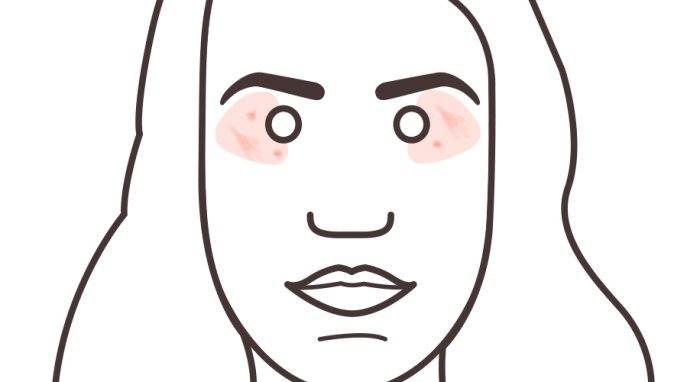Vertical heterophoria :symptoms, causes and treatment
What is vertical heterophoria?
Vertical heterophoria (VH) is often a misdiagnosed condition. The person may suffer from uncontrolled headaches, dizziness, and get no relief on treatment. It is a condition of misalignment of eyes in a vertical plane. This misalignment can often be missed in routine eye exams due to its small size. It does not necessarily occurs every time as it might be occurring moderately or some of the times. It is a binocular dysfunction which is a disturbance in the coordination and alignment of the two eyes, leading to difficulties in binocular vision

Symptoms
- Headaches specially over brow, frontal and temporal region
- Sinus headaches due to muscle strain
- Eyestrain
- Dizziness
- Tiredness in eyes
- Difficulty in focusing
- Quivering of extra-ocular muscles causing people to feel light headed and dizzy
- Pain in neck region due to persistent bad head posture
- Reading difficulties
Causes
Muscle weakness and loss of strength
Muscle weakness differences in muscle length, strength, or attachment points can affect the alignment of the eyes particularly the superior oblique and superior rectus muscles can contribute to vertical heterophoria.
Neurological factor involvement in vertical heterophoria
A dysfunction in the neurological pathways involved in eye alignment can lead to vertical heterophoria.
Binocular vision problems
The binocular vision disturbance can lead to decreased depth perception and stereopsis. Any disruption in binocular vision, such as a deficiency in the ability to fuse images from each eye, can contribute to eye misalignment, including vertical heterophoria. The binocular vision has following three main components:
- Depth perception
- Fusion
- Stereopsis
Head trauma or any injury
A concussion or injury to the eye or its surrounding structures can disturb the normal functioning of the eye muscles or associated neurological pathways which are responsible for eye alignment leading to VH.
How to diagnose Vertical Heterophoria
Following are the steps involved in diagnosing vertical heterophoria:
- Medical History and Symptoms
- Visual Acuity Test- to evaluate clarity of vision
- Cover Test-The ocular physician will observe any movement or deviation in the covered eye when it is uncovered, which can indicate a misalignment.
- Prism Test- to assess the presence and magnitude of any eye misalignment
- Binocular Vision Evaluation of fusion, depth perception and stereopsis. The eye care professional will inquire about the specific symptoms you experience and how they relate to visual tasks, such as reading, focusing at different distances, or using electronic devices.
Based on the findings from these examinations, the eye care professional can diagnose vertical heterophoria. If vertical heterophoria is suspected, further tests may be conducted, such as additional prism testing or specialized imaging techniques, to confirm the diagnosis and determine the specific characteristics of the condition.
Treatment
Use of prisms
The use of specialized eyeglasses or prism lenses that help to correct the eye misalignment. These lenses are designed to alleviate the strain on the eye muscles and bring the eyes into proper alignment, reducing symptoms associated with vertical heterophoria. The prism in the lenses shifts the visual image slightly, allowing the eyes to work together more effectively.
When a person with vertical heterophoria starts wearing prism experience, he might feel temporary side effects such as dizziness or eyestrain as the brain adapts to the new visual adjustment.
Syntonic
Syntonic has been used as a complementary therapy for various visual and neurological conditions, there is limited scientific evidence specifically regarding its effectiveness in treating vertical heterophoria (VH). Syntonic is often used as a complementary therapy in the management of conditions such as binocular vision disorders, amblyopia (lazy eye), strabismus, light sensitivity, visual processing disorders, and certain neurological conditions. It involves the use of specialized devices, such as light-emitting diodes (LEDs) or filtered lenses, to deliver the appropriate wavelengths of light to the eyes. The patient looks at different positions with photo-syntonic glasses that stimulate brain to figure out how to align the eyes.
Vision therapy
Vision therapy for VH typically focuses on addressing the underlying binocular vision and eye movement imbalances that contribute to the condition. This includes:
- Eye Muscle Exercises
- Visual Integration Activities
- They may include tasks that require binocular coordination, depth perception exercises, and visual processing activities.
- Home-Based Activities:
- These activities may include eye exercises, visual tracking exercises, or specific visual tasks.
Founder of EyesMatterMost- an optometry student who loves talking about eyes. I tend to cover topics related to optometry, ophthalmology, eye health, eyecare, eye cosmetics and everything in between. This website is a medium to educate my readers everything related to eyes.

